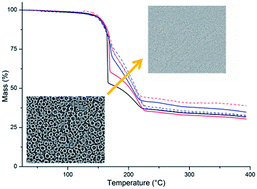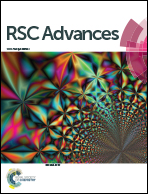Combustion deposition of MoO3 films: from fundamentals to OPV applications†
Abstract
A systematic study of a combustion precursor's thermal decomposition pathway is undertaken, in both powders and thin films, to obtain insights in the various parameters influencing the combustion process. The study focuses on MoO3 as a hole transporting layer (HTL) for applications in organic photovoltaics (OPV). Via evolved gas analysis, it was found that fuel volatility occurs prior to the actual combustion reaction of the acetylacetonate based precursor, affecting the optimal oxidizer to fuel ratio. Moreover, close investigation showed that the high rate combustion reaction disappears with increasing surface to volume ratio. Nonetheless, thermal analysis performed on films suggests that with the right heating rate, an oxidative complete decomposition still occurs in films, exemplified by the film composition and specific morphological differences in the resulting layers and through analysis of the evolved components. Finally, the discussed synthesis route allows organic free, crystalline MoO3 films to be obtained affording organic solar cell devices with promising current density–voltage characteristics.


 Please wait while we load your content...
Please wait while we load your content...